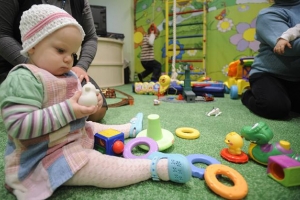Strengthening Chemical in Product campaign towards effective SAICM Implementation in the Philippines
The EcoWaste Coalition, with support from IPEN’s Chemicals in Products Program, conducted an investigation on the availability of toys containing hazardous chemicals that are sold in the Philippines. The study was prompted by the group’s continuing concern over the sale of toys that have not passed quality and safety standards, including toys laden with toxic metals, phthalates and flame retardants. The study was also spurred by government-issued directives banning lead in toys and other child
The EcoWaste Coalition, with support from IPEN’s Chemicals in Products Program, conducted an investigation on the availability of toys containing hazardous chemicals that are sold in the Philippines. The study was prompted by the group’s continuing concern over the sale of toys that have not passed quality and safety standards, including toys laden with toxic metals, phthalates and flame retardants. The study was also spurred by government-issued directives banning lead in toys and other children’s products such as those decorated with lead paints, and the need to know if such an important public health measure is well implemented. In addition the study was aimed at promoting the implementation of the Strategic Approach to International Chemicals Management (SAICM) Chemicals in Products Program (SAICM CiP Program) and associated Guidance in the Philippines to improve information disclosure on what chemicals are in children’s products, including toys. 1.Selecting chemicals to be included in the information exchange on chemicals in products
During the implementation of the projects we obtained new data on toxic metals and phthalates in toys which are regulated by the Philippine national legislation.
2. Analyzing information on the product labels
While analyzing product labels we found out whether chemicals revealed during data generation and/or other chemical ingredients are listed on the labels.
3. Based on the data that we collected, we made a conclusion regarding the availability of information on regulated and/beyond regulated chemicals/chemicals based on their hazardous characteristics to the stakeholders outside the supply chain.
Overall, the study highlighted the need for a more stringent enforcement of the country’s existing toy regulations, including the issuance of the Implementing Rules and Regulations of the Toy and Game Safety Labelling Act of 2013 and the enactment of proposed Safe and Non-Toxic Children’s Product Act.
This study provides another basis for the authorities to require toy companies to disclose the chemical content of their products as a condition for market access, which could substantially improve the protection of children and consumers, while reducing the burdens on government regulators at the same time. The toy industry should provide consumers with the necessary health and safety information, which should not be treated as confidential business information.
As it is highlighted in the SAICM Chemicals in Product Programme, par. 49, “ information needed to protect human health and the environment should not be regarded as confidential…”. Though the Philippines government or any toy producing companies inside or outside the Philippines have not formally joined the SAICM CiP Programme, our project proves the need to encourage them to join. By becoming formal members of this voluntary initiative, governmental agencies and the toy industry would prove their willingness to provide stakeholders with information that will help reduce toxic exposure and associated health risks.
As recommended in the joint study of the EcoWaste Coalition and IPEN in 2011, “a comprehensive approach to regulating toxic substances in children’s toys should prohibit substances of concern such as carcinogens, mutagens, reproductive toxicants, neurotoxicants, immunotoxicants, persistent bioaccumulative and toxic substances, and endocrine disrupters. ”
Becker et al. propose four key elements for proactive policy-making on toxic substances in toys and children’s products, that the EcoWaste Coalition would like to get implemented in the Philippines,: 1) Ban or restrict the use of chemicals with well-documented toxicity in toys and other children’s products; 2) Ensure consumers’ “right to know” about toxic chemicals in children’s products including labelling to promote consumer choice; 3) Require chemical manufacturers to generate and disclose basic toxicity information for all chemicals; and 4) Promote the design and development of safer children’s products using green design, safe natural materials, and green chemistry.
External source(s)
Image

IPEN
Project start date
06/03/2018
Project end date
14/12/2018

